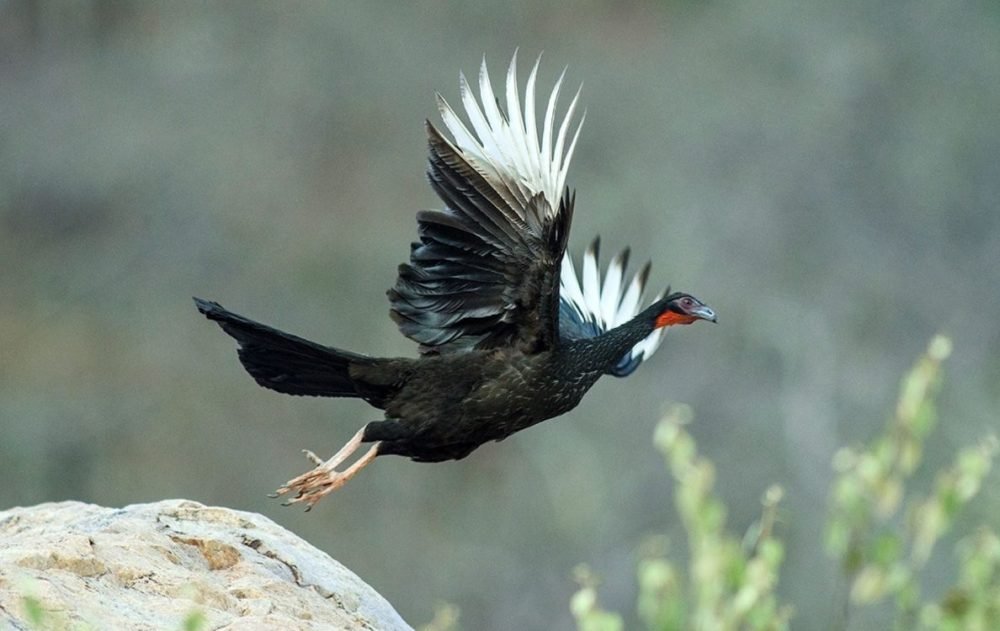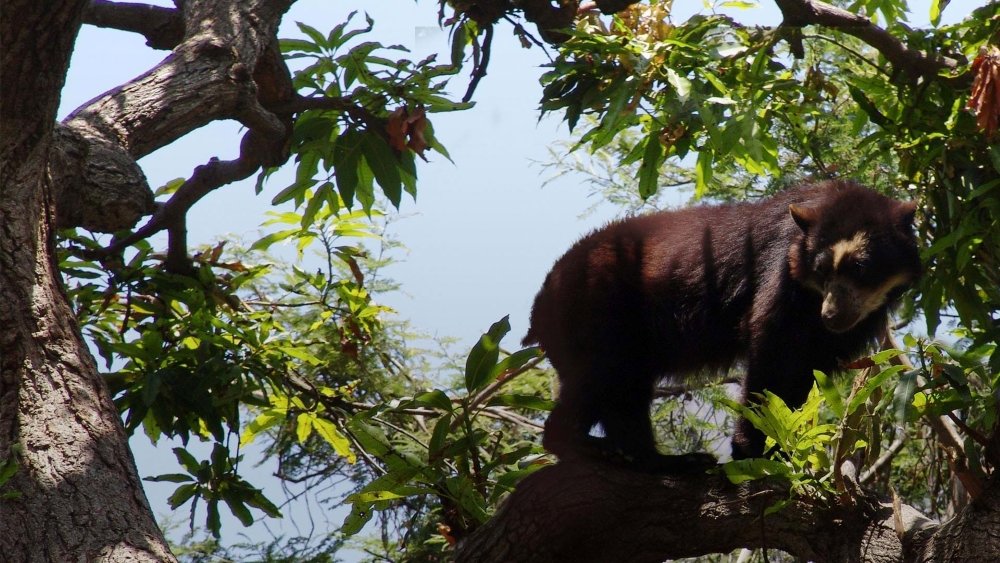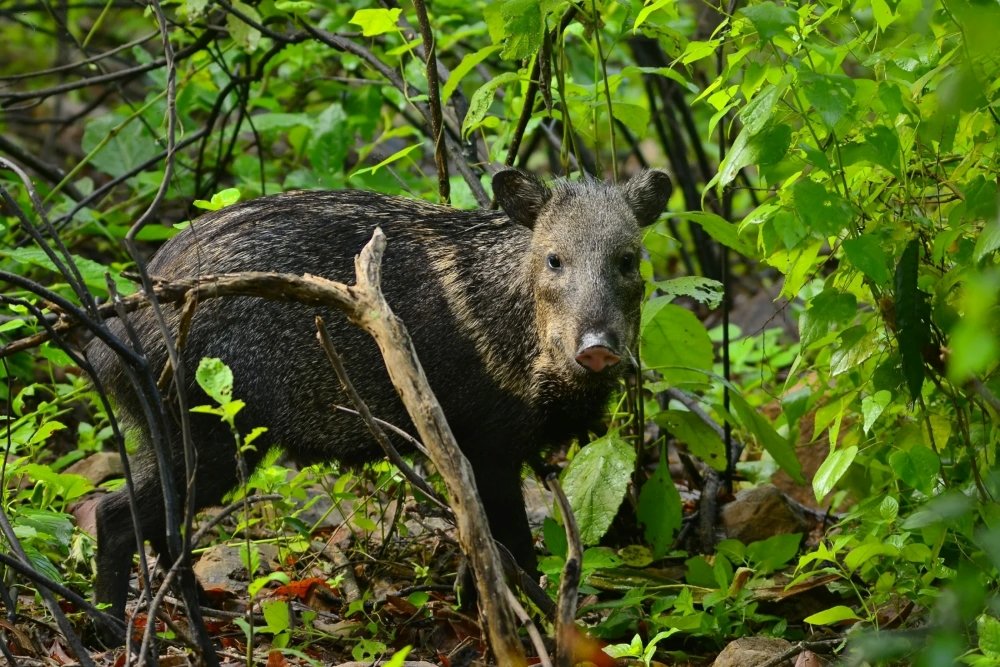Chaparri Ecological Reserve | Lambayeque
The Chaparri Ecological Reserve, located in the Lambayeque region of northern Peru, is a protected area covering approximately 34,000 hectares. This reserve is managed by the rural community of Santa Catalina de Chongoyape and is known for its importance in biodiversity conservation, especially for endangered species such as the spectacled bear and the Andean condor.
In summary, Chaparri Ecological Reserve is an outstanding example of community conservation in Peru, where environmental protection goes hand in hand with sustainable development and the well-being of local populations. Its importance in biodiversity conservation and the promotion of ecotourism make it an emblematic destination for those seeking experiences of contact with nature and contributing to the conservation of the planet.
Biodiversity of the Chaparri Ecological Reserve | Lambayeque
The variety of life on Earth, including the diversity of species of plants, animals, fungi and microorganisms, as well as the genetic diversity within each of these species and the different ecosystems they inhabit. It is a fundamental concept in ecology and environmental science, as biodiversity provides a range of ecosystem services vital to ecosystem functioning and human well-being.
Flora:
- More than 1,000 species of plants, including: Trees: carob, sapote, palo santo, ceibo, hualtaco, pasallo Cactaceae: San Pedro, cardon,
- hedgehog Epiphytes: orchids, bromeliads Herbs: grasses, legumes.
Fauna:
More than 300 species of animals, including:
- Mammals: spectacled bear, puma, red deer, fox, weasel, bat.
- Birds: white-winged guan, Andean condor, hummingbird, emerald parrot, Tumbes pitajo, bandurria.
- Reptiles: iguana, snake, lizard
- Amphibians: toad, frog
- Fish: catfish, mojarra
Endangered species:
- Spectacled bear
- White-winged guan
- Andean condor
Importance of biodiversity:
The high biodiversity of Chaparri Ecological Reserve is important for several reasons:
- It sustains essential ecological processes: The diversity of plants and animals in the reserve helps maintain the ecological balance of the equatorial dry forest.
- It regulates the climate: Dry forests absorb carbon dioxide and release oxygen, which helps regulate the local and global climate.
- Provides natural resources: The plants and animals of the reserve are a source of food, medicine and materials for local communities.
- It is a cultural asset: The reserve’s natural beauty and rich biodiversity are an important cultural asset for people living in the region.

Threats to biodiversity:
The biodiversity of Chaparri Ecological Reserve is threatened by several human activities, such as:
- Deforestation: Logging for agriculture, cattle ranching, and urban development is fragmenting species’ habitat and reducing their populations.
- Hunting: Poaching of wild animals for meat or illegal trade is a threat to some species, such as the spectacled bear and the white-winged guan.
- Pollution: The use of pesticides and fertilizers in agriculture can contaminate water and soil, affecting plants and animals.
- Climate change: Climate change is causing changes in temperature and precipitation, which may have a negative impact on some species.
Conservation efforts:
Several efforts are underway to conserve the biodiversity of Chaparri Ecological Reserve, including:
- Legal protection: The reserve is protected by Peruvian law and is managed by the Comunidad Campesina Muchik Santa Catalina de Chongoyape and the Plenge Pardo family.
- Scientific research: Research is being conducted to better understand the reserve’s biodiversity and the threats it faces.
- Environmental education: Environmental education programs are being carried out to raise awareness among local communities about the importance of conservation.
- Ecotourism: Ecotourism is being promoted as a sustainable way to use the reserve and generate income for local communities.
Conserving the biodiversity of the Chaparri Ecological Reserve is a major challenge, but it is also an opportunity. If we work together, we can protect this valuable ecosystem for generations to come.

What can be done in the Chaparri Ecological Reserve | Lambayeque?
In the Chaparri Ecological Reserve, visitors can enjoy a wide range of ecotourism and nature observation activities. Some of the activities that can be done in the reserve include:
- Wildlife observation: The reserve is home to a variety of wildlife species, including the spectacled bear, the Andean condor, the white-tailed deer, among others. Visitors can take guided tours to observe and photograph these species in their natural habitat.
- Birdwatching: Chaparri is a popular destination for birdwatchers, as it hosts a great diversity of bird species, many of which are endemic to the region. Visitors can enjoy guided birdwatching tours led by local experts.
- Guided hikes: The reserve has a network of well-maintained trails that traverse different types of habitats, such as dry forests, ravines, and hills. Visitors can take guided hikes to explore the natural beauty of the reserve and learn about its flora and fauna.
- Visits to local communities: Chaparri is surrounded by rural communities that participate in the management and conservation of the reserve. Visitors have the opportunity to interact with local residents, learn about their traditions and customs, and support the local economy by purchasing handmade products.
- Accommodation and gastronomy: The reserve offers accommodation options ranging from rustic cabins to eco-lodges with all the amenities. Visitors can also enjoy local cuisine, which includes traditional dishes made with fresh regional ingredients.
These are just some of the activities that can be done in the Chaparri Ecological Reserve. Overall, the reserve offers a unique experience for those looking to connect with nature and contribute to the conservation of biodiversity in the region.
How to get to the ecological reserve of Chaparri?
To get to the Chaparri Ecological Reserve, located in the Lambayeque region in northern Peru, several routes can be followed depending on the starting point. Here are some common options:
- From the city of Chiclayo: Chiclayo is the largest city and the closest to the Chaparri Reserve. From Chiclayo, you can take a bus or rent a vehicle to reach the reserve. The car journey usually takes around 3 to 4 hours, depending on road conditions.
- From other nearby cities: If you are in a nearby city such as Trujillo or Piura, you can also reach Chaparri by taking a bus to Chiclayo and then following the instructions mentioned above.
- Organizing a tour: Many local travel agencies in Chiclayo offer tours to the Chaparri Reserve, which include transportation from the city, tour guides, accommodation, and activities in the reserve. This can be a convenient option for those who prefer not to worry about the logistics of the trip.
Once at the reserve, it’s important to follow regulations and the guidance of local guides to ensure a safe and environmentally respectful experience.

Recommendations for visiting the ecological reserve of Chaparri
Here are some recommendations for visiting the Chaparri Ecological Reserve:
- Plan ahead: Before visiting, it’s a good idea to research the reserve’s rules and regulations, as well as the available activities and accommodations. Planning ahead will help ensure a smooth and enjoyable experience.
- Respect nature: Remember that you are visiting a protected natural area. Respect wildlife and their habitats by observing from a distance and avoiding any disturbances.
- Follow guidance: When participating in guided tours or activities, follow the instructions and guidance provided by local guides. They are knowledgeable about the area and can help you make the most of your visit while staying safe.
- Pack essentials: Be sure to bring essentials such as sunscreen, insect repellent, water, and appropriate clothing for outdoor activities. Binoculars and a camera can also enhance your experience, especially for birdwatching and wildlife observation.
- Support local communities: Chaparri is surrounded by rural communities that play a key role in its conservation. Consider supporting local artisans by purchasing handmade crafts or products.
- Practice responsible tourism: Minimize your impact on the environment by staying on designated trails, avoiding littering, and respecting local customs and traditions.
- Learn and engage: Take the opportunity to learn about the flora, fauna, and conservation efforts in Chaparri. Engage with local guides and community members to gain a deeper understanding of the area’s significance and challenges.
- Be prepared for weather: The climate in Chaparri can vary, so be prepared for changes in weather conditions. Bring appropriate clothing and gear to stay comfortable during your visit.
By following these recommendations, you can have a rewarding and memorable experience while visiting the Chaparri Ecological Reserve.












